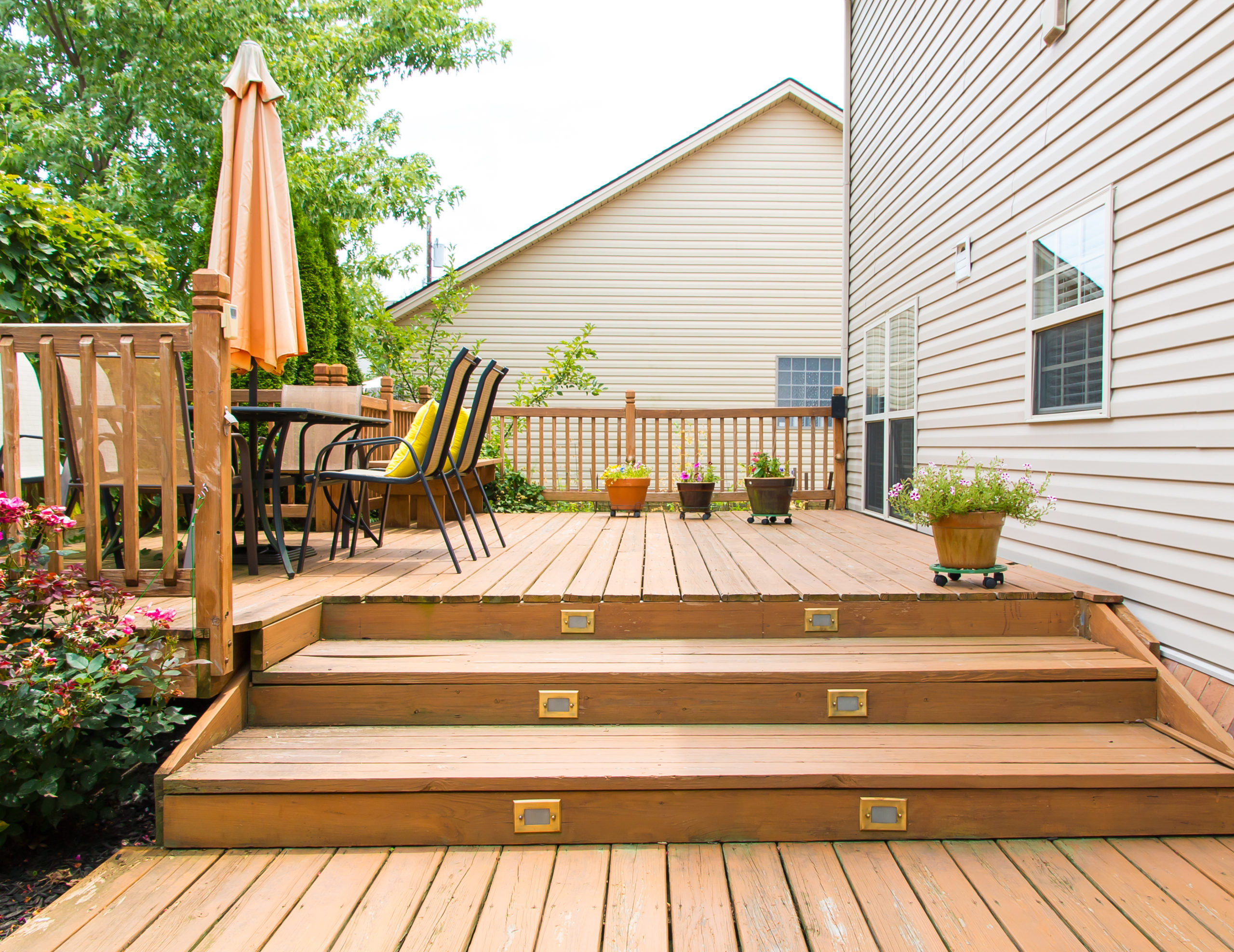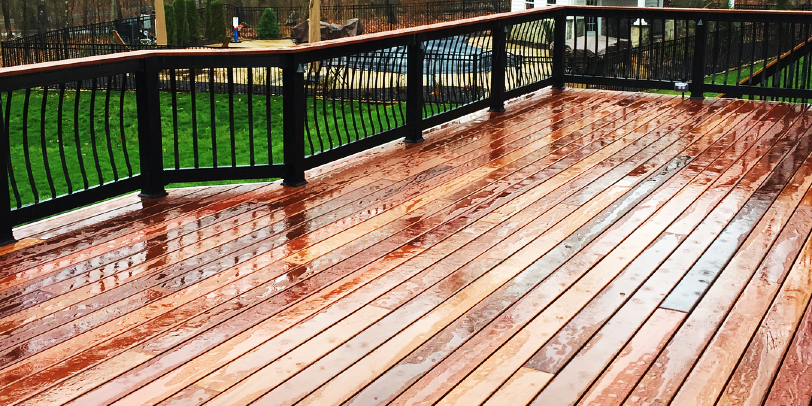Water-Based Stains for Your Deck: Advantages and Applications
Water-Based Stains for Your Deck: Advantages and Applications
Blog Article
A Comprehensive Guide to Various Kinds Of Deck Discoloration Techniques for Ultimate Security and Visual Appeals
In the world of deck maintenance, the art of tarnishing stands as a pivotal step towards both preserving the integrity of your outdoor room and improving its aesthetic allure. As we browse through the complex globe of deck discoloration strategies, one begins to appreciate the nuanced strategies that can make all the distinction in between an average surface and a remarkable one.
Recognizing Various Sorts Of Stains
Numerous kinds of discolorations are typically used in the process of deck staining to accomplish different aesthetic and protective impacts. Clear spots are ideal for showcasing the natural grain of the timber while supplying marginal protection versus UV rays and moisture. On the various other hand, semi-transparent stains use a balance in between color enhancement and security, allowing some wood grain to reveal via. For a much more opaque surface that supplies optimum defense versus the components, strong discolorations are the favored choice. These discolorations can be found in a broad array of shades and efficiently conceal the timber grain.
Furthermore, there are also specialized spots such as sealers and printer toners. Toners include a tip of color to the wood while giving minimal security, making them ideal for newer decks with much less wear. Sealants, on the various other hand, deal protection versus dampness and UV rays without including color, making them a prominent option for decks that already boast a desirable shade. Recognizing the attributes and advantages of each kind of discolor is essential for accomplishing the preferred look and durability for your deck.
Selecting the Right Spot Shade
When considering the visual appeals of your deck discoloration task, the selection of stain color plays a vital duty in improving the safety qualities of the picked tarnish type (Chicago Deck Staining). The shade you select can significantly impact the total appearance of your deck, as well as its capacity to hold up against the components in time
When choosing a discolor color, it's necessary to think about the existing color scheme of your home's exterior. Integrating the deck discolor with the overall visual of your property can create a aesthetically appealing and cohesive outside room. In addition, the color of your deck discolor can affect the temperature level of the deck surface; darker shades often tend to take in more warm, while lighter colors reflect sunshine and remain cooler.
Additionally, the kind of timber you are staining will likewise impact how the discolor color appears. Various wood types can engage with the stain in different means, possibly changing the final shade. It's suggested to examine the discolor on a little, low-profile area of the deck to guarantee the color turns out as wanted before proceeding with the whole task.
Preparing Your Deck for Staining
To guarantee a successful and lasting deck staining job, thorough preparation of the deck surface area is necessary. Begin by cleansing the deck extensively to remove dirt, crud, mildew, and any old end up or discolor. Use a deck cleaner or a combination of water and cleaning agent along with a stiff brush or pressure washing machine to scrub the surface clean. After cleansing, permit the deck to dry totally prior to relocating on to the following step.
Inspect the deck for any type of damaged or rotten boards that require to be replaced. Hammer down any extending nails and sand any kind of rough locations to guarantee a smooth surface for staining. Inspect for any loosened barriers or actions that might require tightening or repair service.
Once the deck is tidy, completely dry, and in excellent fixing, consider using a wood brightener to bring back the deck's natural color and open the timber pores for better stain penetration. Finally, shield any type of neighboring plants, furnishings, or surfaces with plastic bed linen prior to proceeding with the staining process. Proper prep work is vital to achieving a professional-looking coating and making the most of the durability of your deck tarnish.
Applying Stain With Numerous Techniques
For a perfect and professional surface, the approach of applying tarnish plays a Source critical function in improving the appearance and longevity of your deck. There are numerous methods you can make use of to ensure an effective application of stain.
It is excellent for intricate areas and getting to in between deck boards. Back-brushing after rolling is suggested to also out the discolor and function it into the wood for better penetration.
Spraying is one more preferred method, supplying speed and simplicity of application, particularly for large deck areas. Whichever strategy you choose, making sure proper preparation and complying with supplier guidelines will help attain a resilient and gorgeous discolor surface on your deck.

Maintaining and Re-staining Your Deck
When it comes to re-staining your deck, the regularity depends on different elements such as the kind of tarnish made use of, the environment in your area, and exactly how much wear and tear your deck experiences. Typically, it is recommended to re-stain your deck every 2-4 years to preserve its defense and appearances.
Before re-staining, guarantee the deck is clean, dry, and complimentary of any kind of previous discolor deposit. Choose a high-grade stain that fits your deck's product and gives the wanted degree of defense.
Conclusion
Finally, recognizing the various kinds of deck spots, choosing the ideal shade, correctly preparing the deck, using tarnish with different techniques, and re-staining the deck and keeping are essential steps for best protection and appearances. By adhering to these steps, you can guarantee that your deck stays in leading condition for years to come.
In addition, the shade of your deck tarnish can influence the temperature level of the deck surface area; darker colors often tend to soak up more warm, while lighter shades show sunlight and stay cooler.
It's recommended to test the tarnish on a small, low-profile area of the deck to ensure the shade turns out as preferred before proceeding with the entire task.

Report this page